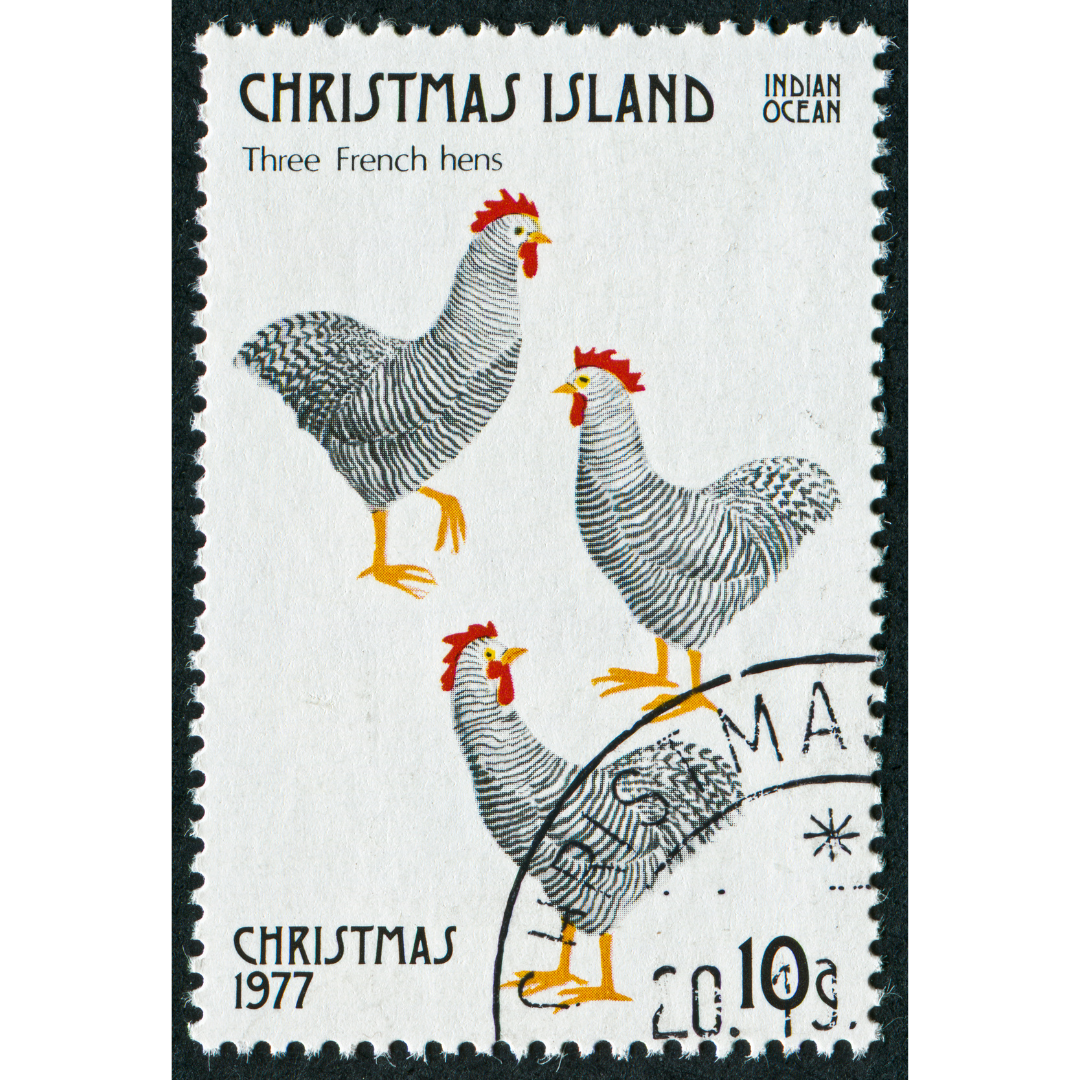Analyzing the Tax Implications of the Twelve Days of Christmas
The gifts from the “Twelve Days of Christmas” are far from practical – it’s not every day you find a use for leaping lords. But, have you ever thought about their tax implications? A tax, after all, is a compulsory financial charge imposed by local, state, or national authorities on individuals or businesses to fund various public expenditures and services. The following are twelve historical tax scenarios.
Twelve Drummers Drumming: A Unique Tax Collection Method in India

In India, drummers serve a unique purpose beyond entertainment in the realm of tax collection. Rather than relating to the entertainment tax, these drummers are instrumental in tax enforcement strategies. Local authorities often employ drum bands to visit businesses that have fallen behind on their tax payments. This method, which aims to prompt payment through public attention, has proven effective. For instance, in Mumbai, tax collections increased by 20 percent following the deployment of drummers. Therefore, the presence of twelve drummers drumming might raise the question of not just the cost of their service, but the extent of the tax debt that necessitated their appearance. When someone in the Indian city of Thane doesn’t pay their taxes, the government sends an army of drummers to their door to shame them. According to the Wall Street Journal, the strategy works very well: When Mumbai started sending drummers after tax dodgers, tax revenue went up 20%.
Eleven Pipers Piping and the Sales Tax Dilemma
Imagine you’re planning to attend a holiday woodwind concert, but you’re unsure if your ticket will be taxed. Sales tax, typically applied to retail sales of goods and services, varies in its application. Many jurisdictions exempt necessities like groceries to lower overall rates, and avoid taxing business-to-business transactions to prevent tax pyramiding. The tax status of concert tickets, however, is less straightforward. In certain areas, concerts might be classified as educational and thus exempt from sales tax. Conversely, the Wisconsin Supreme Court ruled in the case of Milwaukee Symphony Orchestra, Inc. v. Wisconsin Department of Revenue that orchestra performances are primarily entertainment, not educational, and are therefore taxable. This ruling suggests that in some states, enjoying the melodies of eleven pipers might come with an additional tax cost.
Ten Lords A-Leaping: A Quirk in Nevada’s Live Entertainment Tax
It’s amusing to imagine nobility engaging in acrobatics for profit – a scenario perhaps fitting for ‘Lords of Misrule’. Interestingly, in Nevada’s previous Live Entertainment Tax system, such an act might have found a tax loophole. This tax, set at 10%, wasn’t applied to performances by employees who weren’t regularly entertainers, leaving room for interpretation on the entertainment value of leaping lords. Additionally, this tax system had its peculiarities: live music was taxable, but audience members too far to enjoy it properly were exempt, and roaming performers singing among the audience were not taxed. This set of rules creates a scenario almost as whimsical as having aristocrats performing for an audience.

Nine Ladies Dancing: From Pagan Festivals to Medieval Plays
The ‘nine ladies dancing’ in the famous Christmas song likely refers to carolers performing a ‘carol,’ a circular dance with roots in pagan festivals. These dances evolved into integral parts of medieval mystery plays, which depicted biblical stories including the life and teachings of Christ, through a blend of dialogue, song, and dance. An example of such a play is the Coventry Mystery Plays, known for the renowned Coventry Carol. In these plays, different guilds, like shipbuilders and goldsmiths in the York Plays, sponsored various biblical scenes.
These guilds formed primarily as a response to the arbitrary tax demands of feudal lords, who wielded extensive power over trade within their domains. They represented collective bargaining units for craftsmen, negotiating tax responsibilities with their lords. Interestingly, while women participated in the original pagan carols, by the time of the mystery plays, men had taken over all female roles.
Eight Maids A-Milking: Dairy Cattle and Tax Favoritism
The ‘eight maids a-milking’ bring to light an interesting aspect of tax codes concerning dairy cattle. Consider a situation in Alberta, Canada, where beef cattle ranchers contended with a local government over a $3 per head tax, a fixed charge applied uniformly to each head of cattle. However, this tax did not apply to dairy cattle, showing a clear preference in the tax system. A similar scenario exists in Virginia, where cattle handlers are taxed 25 cents per head sold, with an exemption for dairy cows returning to farms for milk production. This distinction in tax treatment highlights the agricultural sector’s nuanced relationship with tax laws, often favoring dairy over beef cattle, much to the chagrin of those hypothetical maids engaged in dairy farming.
Seven Swans A-Swimming: Territorial Nature and Property Tax Considerations
The imagery of ‘seven swans a-swimming’ conjures a serene picture, yet it also highlights the territorial nature of swans, particularly evident in nesting pairs. To accommodate seven swans swimming harmoniously, a considerably large lake would be necessary. This requirement for ample space introduces a significant aspect of property ownership: the higher property taxes often associated with larger and more valuable properties, such as those with substantial lakes.
Owning such a property could lead to substantial tax assessments, reflecting the value and size of the land. This becomes especially pertinent if the property includes natural features like large lakes that enhance its aesthetic and monetary value. However, the financial burden of these taxes might become a point of concern in the event of unexpected market downturns or ‘black swan’ events – unforeseen occurrences that can dramatically impact financial markets and personal investments. In such scenarios, the cost of maintaining such a property, including the tax obligations, could become a significant financial strain, turning what was once a tranquil setting into a source of economic pressure.
Six Geese A-Laying: Wildlife Tax Exemptions and Unique Tax Laws
 In the context of the ‘Six Geese A-Laying,’ an interesting question arises about their status as wild geese, especially in relation to tax laws like Texas’s wildlife tax exemption. To be eligible for this exemption, landowners must actively engage in at least three out of seven habitat management activities, such as controlling the habitat, managing predators, and providing shelter or supplemental food for wildlife. This rigorous requirement means that unless the geese are exceptionally valuable (akin to the fabled goose that lays golden eggs), the cost and effort involved in qualifying for the exemption may outweigh the financial benefits.
In the context of the ‘Six Geese A-Laying,’ an interesting question arises about their status as wild geese, especially in relation to tax laws like Texas’s wildlife tax exemption. To be eligible for this exemption, landowners must actively engage in at least three out of seven habitat management activities, such as controlling the habitat, managing predators, and providing shelter or supplemental food for wildlife. This rigorous requirement means that unless the geese are exceptionally valuable (akin to the fabled goose that lays golden eggs), the cost and effort involved in qualifying for the exemption may outweigh the financial benefits.
Moreover, the tax landscape saw an interesting development with a 2014 tax bill proposing to extend bonus depreciation benefits. Bonus depreciation is a significant tax incentive, allowing businesses to deduct a greater portion of investments in new or improved technology, equipment, or buildings in the first year. This provision aims to mitigate a bias in the tax code and encourages more corporate investment, which can lead to increased worker productivity, higher wages, and job creation. Notably, this bill proposed to apply this incentive to capital investments in fruits that grow on trees, but not those on bushes. This distinction would be particularly favorable if one were to believe the obscure medieval notion that a certain species of goose was, in fact, a fruit growing on trees. This quirky historical belief adds a layer of whimsy to the interpretation of tax laws and their impact on different types of assets, even those as unusual as tree-borne geese.
Five Gold Rings: A Tale of Luxury Taxes and Historical Misinterpretations
The ‘five gold rings’ from the classic Christmas song might bring to mind the U.S.’s brief foray into luxury taxation in 1991 when a 10 percent tax was levied on high-end goods, including jewelry over $10,000. However, this tax, faced with underwhelming revenue generation and adverse impacts on certain industries, was largely reversed by Congress in just two years, leaving only a similar tax on cars priced above $30,000, which was also eventually repealed. While some states continue to enforce their own luxury taxes, Major League Baseball has its version, imposing a ‘luxury tax’ on team payrolls exceeding set limits, though it’s not an official government tax. Interestingly, teams may encounter dual luxury taxes: one on high payrolls and another on extravagant World Series rings. However, a historical twist suggests that the ‘five gold rings’ could actually be a reference to ring-necked pheasants, a bird historically prized by the elite and linked to the lore of Jason and the Argonauts. If this interpretation holds, it intriguingly shifts the focus of the first seven days of the Christmas song to a variety of birds.
Four ‘Calling’ Birds: Clarifying a Common Misunderstanding and Tax Implications
The phrase ‘Four Calling Birds’ from the classic Christmas carol is often misunderstood. The original lyric is actually ‘Four Colly Birds,’ with ‘colly’ meaning black, referring to blackbirds, which are a type of thrush. While these birds may not hold the same noble status as pheasants, they have a unique place in culinary history, often regarded as a delicacy. Historical references, like the famous nursery rhyme about blackbirds baked in a pie, highlight their use in traditional cuisine.
Given this culinary context, it’s important to consider potential tax implications if you’re in a region where these birds are served as part of a meal. Many jurisdictions impose a meals tax on prepared foods, which could include dishes featuring blackbirds. This tax varies from place to place and is typically applied at the point of sale in restaurants or other dining establishments. Therefore, if you’re indulging in a dish that includes ‘colly birds’ or any other type of prepared bird, it would be wise to check if this meals tax applies in your area. This tax, often a small percentage of the meal cost, contributes to local revenue and can have implications for both consumers and businesses in the food service industry.
Three French Hens: A Linguistic Twist and Historical Anecdotes
The ‘Three French Hens’ in the renowned Christmas song might not be hens after all but could be a play on words pointing to roosters. This interpretation stems from the close resemblance between ‘Gallia,’ the Latin name for France, and the Latin word for rooster. This possible misinterpretation brings a twist to the traditional Christian holiday narrative, echoing the biblical moment where a rooster crowed three times during Jesus’ betrayal, symbolically prefiguring the crucifixion.
Adding to the intrigue, there’s an interesting historical tale by Procopius, a historian, about the last emperor of the Western Roman Empire. Upon hearing from a eunuch that ‘Rome had fallen,’ the emperor initially thought he was being informed of the death of his beloved rooster, named Rome. His grief turned to relief when he discovered it was the city, not his prized rooster, that had been lost. This anecdote, while amusing, also touches upon the broader theme of misinterpretation, both linguistic and situational. Moreover, it subtly hints at the role excessive taxation may have played in the downfall of the Western Roman Empire, drawing a parallel to how misunderstandings and fiscal burdens can have profound impacts on history.
Two Turtle Doves: Symbolism in Nature and Tax Implications for Marriage
The ‘Two Turtle Doves’ in the classic Christmas song likely carry deeper symbolism, traditionally representing love and fidelity, as these birds are known for their strong pair bonds, often staying with their mates for life. This enduring partnership between turtle doves makes them an emblematic symbol of marriage and commitment in various cultures and lore, including the fascinating bird lore detailed in the Book of Saint Albans. Their portrayal in the song may also subtly reflect the poet’s fascination with birds and their symbolic meanings.
However, on a more practical note, the symbol of marriage embodied by these doves also brings to mind the modern implications of marital status on taxation. In the realm of tax law, the concept of a ‘marriage penalty’ arises when married couples face a higher tax burden compared to what they would owe individually. This penalty often occurs in tax systems where the income brackets for joint filers are not double those for single filers, leading to a disproportionate increase in tax liability for couples with similar income levels. This tax issue, affecting both high- and low-income couples, contrasts with the romantic symbolism of the turtle doves, offering a grounded perspective on the financial realities that can accompany marriage.
Partridge in a Pear Tree: Exploring the Tree’s Historical and Linguistic Significance
Shifting focus from the abundance of birds, the ‘Partridge in a Pear Tree’ from the famed Christmas carol brings us to the tree itself. This element draws attention to a historical episode in 1944 when the Soviet Union, in an effort to increase revenue, imposed a heavy tax on fruit trees. This tax burden led many struggling farmers to cut down their trees, a decision reflecting the harsh economic realities of the time. Nikita Khrushchev later remarked on this, highlighting how economic decisions often have unintended and unfavorable consequences.
Interestingly, the pear tree in the song might be a result of linguistic evolution. Some suggest that the original phrase was ‘a partridge, une perdrix,’ simply a repetition of ‘a partridge’ in French. Over time, this phrase may have transformed into the current ‘in a pear tree’ due to a common linguistic phenomenon known as a mondegreen, where misheard or misinterpreted phrases gain new meanings. This term originates from a misinterpretation in the Scottish ballad ‘The Bonnie Earl o’ Moray,’ where ‘laid him on the green’ was heard as ‘Lady Mondegreen.’ Thus, the pear tree, whether real or a result of linguistic misinterpretation, carries both historical and linguistic significance beyond its simple portrayal in the song.
One Final Note: Revisiting the True Meaning of the Twelve Days of Christmas
There’s a common misconception in our society about the nature of the Twelve Days of Christmas, and it’s not just about overlooking their potential tax implications. Contrary to popular belief, these twelve days are not a countdown leading up to Christmas Day; rather, they commence from it. Christmas Day marks the beginning of Christmastide or Twelvetide, a festive season that spans twelve days, concluding with the Twelfth Night, as famously referenced by Shakespeare. This night falls on the eve of the Epiphany, a significant Christian celebration that commemorates the revelation of God incarnate as Jesus Christ.
This period is traditionally a time of continued festivity and reflection, following the anticipation and celebration of Christmas Day itself. In light of this, if you’re planning to embrace these traditions – say, by preparing a special Twelfth Night pie featuring those ‘colly birds’ or any other festive delicacies for your loved ones – there’s no need to rush. The true spirit of the Twelve Days of Christmas offers ample opportunity to celebrate, reflect, and enjoy the company of those dear to you, all the way through to the grand finale on Twelfth Night. It’s a time to savor the joy and warmth of the season, creating memories that extend well beyond December 25th.

Let’s find your way to tax and accounting peace of mind
Let us be part of your journey towards success.